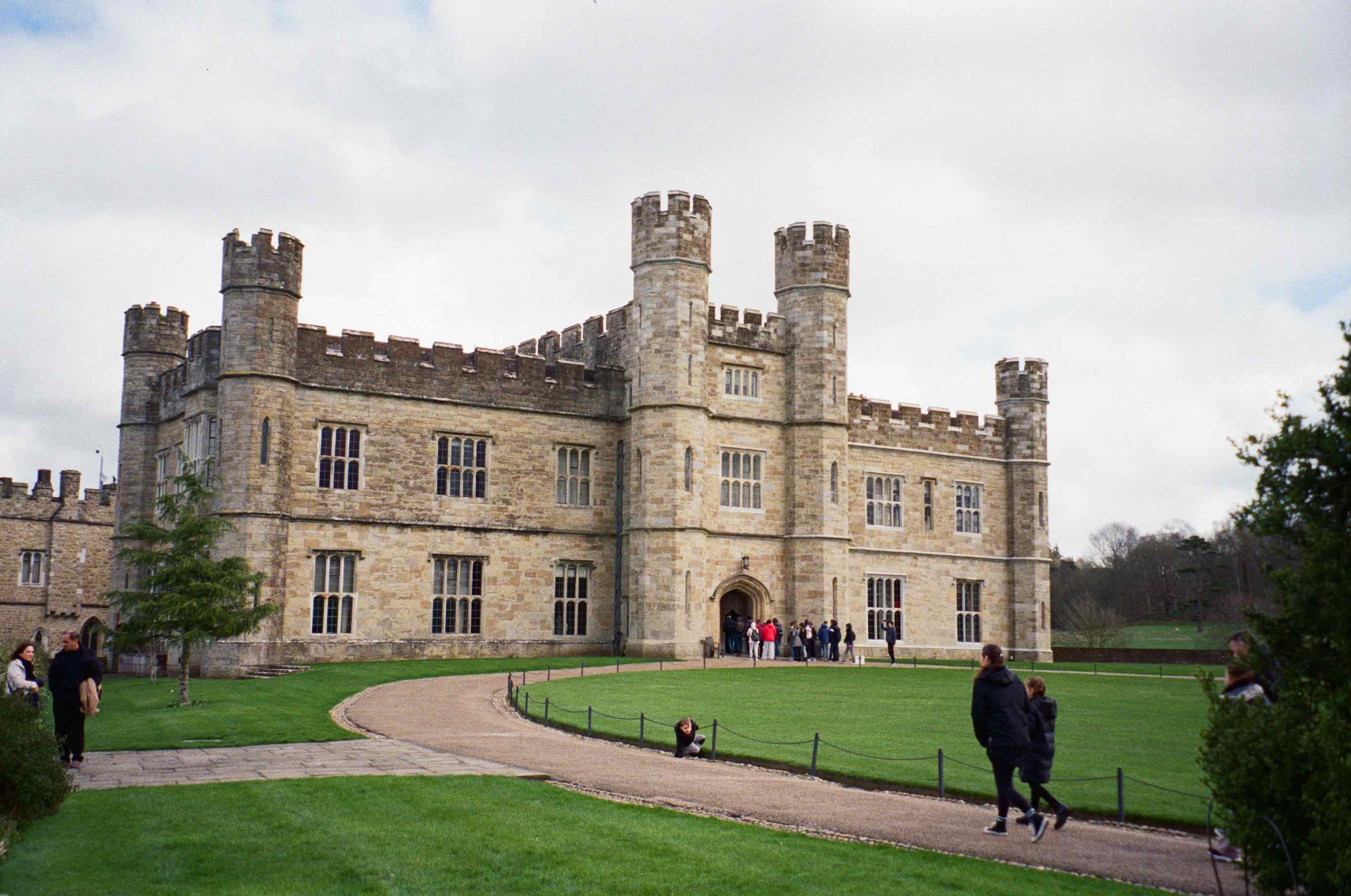Before I left to study abroad in England, I knew that to get the most out of my experience I would need to explore beyond London. Among these trips I took was one to Kent ("The Garden of England"), which included stops at Leeds Castle, Canterbury, and the White Cliffs of Dover. Although I have ventured out to other locations in England on my own, when limiting the experience to a day and considering cross-locational travel in areas without as much connecting public transport, doing so is much easier to accomplish with the help of a guide and tour bus. The initial bus drive from London to Kent, which began at Victoria Coach Station, lasted just over an hour. In addition to the more convenient transportation option, tour guides offered unique historical and personal stories along the route. Whether that be their recommended pubs in whichever locations we passed or more factual knowledge about the castles or land we were entering, the guides gave me a better sense of England from a local’s perspective.
The first stop on the tour was Leeds Castle. Surrounded by a moat and around that acres of grounds, forests, and gardens, the actual tour inside the castle was relatively short. Despite many of these rooms being blocked off from the general public, the ones available to walk around stood out from the past few castles I had visited. The use of mannequins within the rooms, the ability to interact in particular places, such as the playable piano, as well as the mix of 1920s furnishing (courtesy of Lady Baillie, the once owner) with the Norman architecture, Leeds Castle was a noticeably unique castle in comparison to the more medieval ones I was used to hearing about. Lady Baillie’s fascination with birds, reflected not only through the decor inside the castle but also in the many birds that find home at Leeds, only added to this singularity. Several bird trainers, carrying owls and falcons, spoke with us about their particular bird species and offered an up-close look at the creatures.
The next destination, Canterbury, was mainly focused on Canterbury Cathedral. A symbol of England (as the Cathedral of the Archbishop) and Romanesque and Gothic architecture, Canterbury Cathedral and the surrounding town are heavily intertwined with British history. Given this influence, it’s always interesting to see how these historic sites mesh together with modern changes. Just a short walk from Canterbury Cathedral, close enough that the tops of the building could still be seen overhead, was a shopping center filled with chain retail and food options. The combination of Canterbury being a main tourist attraction and the many stores meant it was crowded, but the breathtaking architecture and long history, from its role as a pilgrimage site to its impact in other facets like the literary "Canterbury Tales," made it worthwhile.
At the last stop, the White Cliffs of Dover provided a dramatic change from the prior two destinations. Rather than the forest landscape at Leeds Castle and the busy town of Canterbury, Dover was a picturesque setting of soaring cliffs, crashing waves, and pebbled beaches. Although the weather was rainy most of the day, the sun came out by the time we hit Dover, allowing for a clear view of the cliffs and Dover Castle looming overhead. Oppositely this view, tour guides told us to look across the water in hopes of spotting France from afar. Through visiting these three locations (Leeds Castle in Maidstone, Canterbury, and Dover) and the bus rides between each, which provided me a view of the many villages, hop gardens, and sheep fields throughout the county, I gained a better sense of Kent and just one instance of life in England outside of London.
Taylor Kirby
GW England - King's College London (GW Study Program)
Spring 2024
Columbian College of Arts & Sciences
Biology and English Double Major





